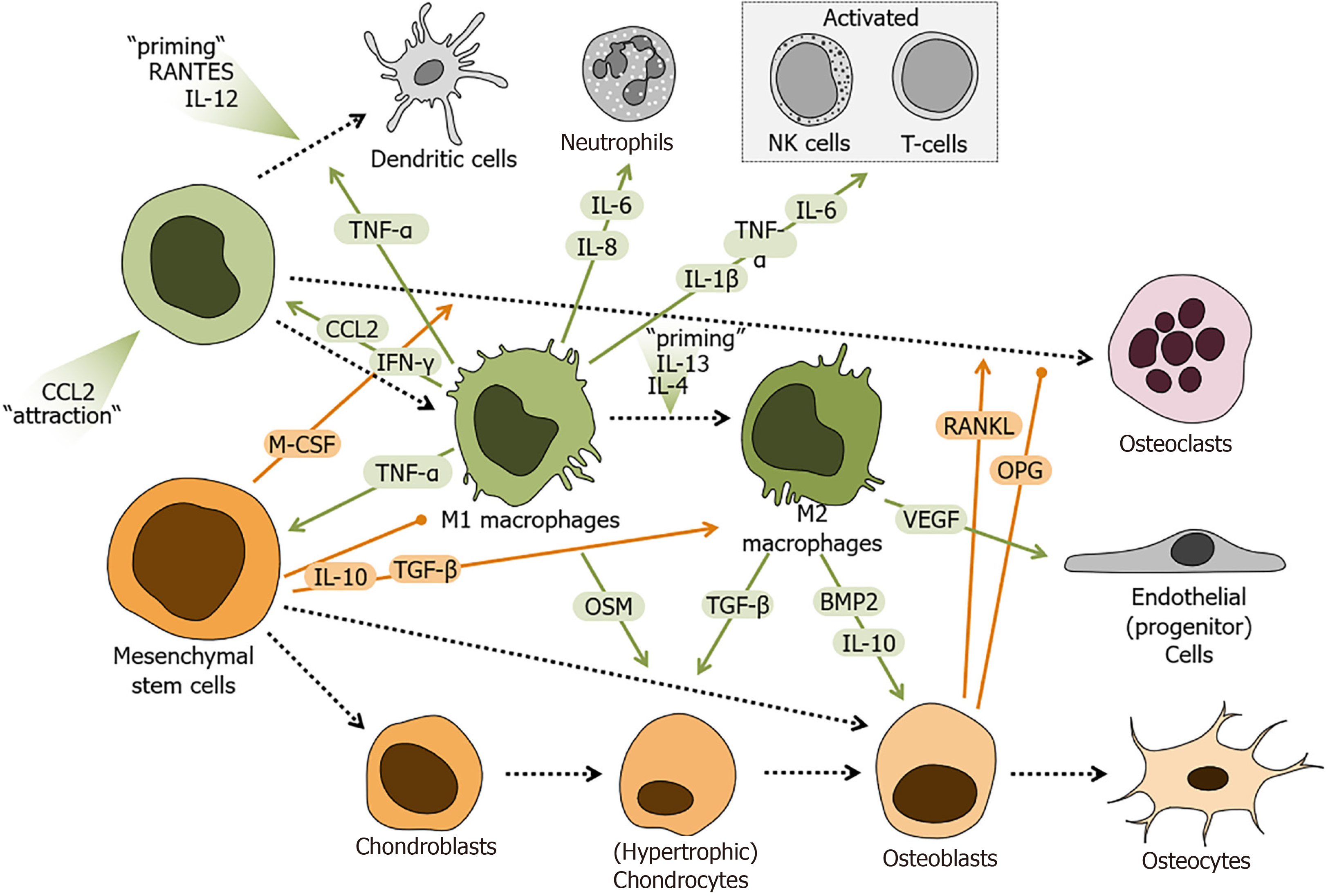Copyright
©The Author(s) 2021.
World J Stem Cells. Nov 26, 2021; 13(11): 1667-1695
Published online Nov 26, 2021. doi: 10.4252/wjsc.v13.i11.1667
Published online Nov 26, 2021. doi: 10.4252/wjsc.v13.i11.1667
Figure 3 Schematic overview of the regulatory role of monocytes and macrophages during fracture healing.
Factors secreted/released from mesenchymal stem cells (MSCs), monocytes, and monocyte-derived cells regulate cellular responses during fracture healing. Factors derived from monocytes and macrophages are marked in green. MSC-derived factors are marked in orange. Local increase in C-C-motif chemokine ligand 2 (CCL2) attract monocytes to the site of fracture, which in the presence of C-C-motif chemokine ligand 5 (RANTES or CCL5) and interleukin 12 (IL-12) differentiate into dendritic cells, in an inflammatory environment are primed towards pro-inflammatory M1 macrophages, or in the presence of IL-4 and IL-13 transform into anti-inflammatory M2 macrophages. Depending on their differentiation state, monocyte-derived cells secrete/release factors e.g., tumor necrosis factor alpha, interferon gamma, CCL2, vascular endothelial growth factor, bone morphogenetic protein 2, transforming growth factor beta (TGF-β), oncostatin M (OSM), IL-1β, IL-6, IL-8, and IL-10 to interact with other cells in the site of fracture. MSCs and MSC-derived cells secrete /release factors e.g., macrophage colony-stimulating factor, IL-10, TGF-β, receptor activator of nuclear factor kappa-Β ligand, or its antagonist osteoprotegerin to affect the monocyte derived-cells. Colored arrows depict stimulation and blunt end lines inhibition. Dashed black arrows indicate differentiation processes. CCL2: C-C-motif chemokine ligand 2; IL: Interleukin; TNF-α: Tumor necrosis factor alpha; IFN-γ: Interferon gamma; VEGF: Vascular endothelial growth factor; BMP2: Bone morphogenetic protein 2; TGF-β: Transforming growth factor beta; OSM: Oncostatin M; M-CSF: Macrophage colony-stimulating factor; RANKL: Receptor activator of nuclear factor kappa-Β ligand; OPG: Osteoprotegerin.
- Citation: Ehnert S, Relja B, Schmidt-Bleek K, Fischer V, Ignatius A, Linnemann C, Rinderknecht H, Huber-Lang M, Kalbitz M, Histing T, Nussler AK. Effects of immune cells on mesenchymal stem cells during fracture healing. World J Stem Cells 2021; 13(11): 1667-1695
- URL: https://www.wjgnet.com/1948-0210/full/v13/i11/1667.htm
- DOI: https://dx.doi.org/10.4252/wjsc.v13.i11.1667









